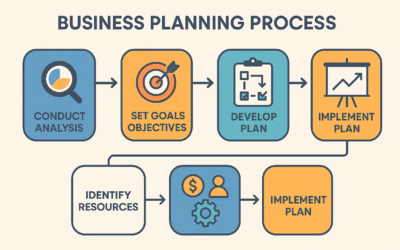One of the key elements in retaining quality employees is to provide excellent onboarding from day one. A recent report showed that 1 in 25 employees leave their new jobs because of bad onboarding experiences
The onboarding process starts before you have chosen the new employee.
The Interview
During the interviewing process, provide the job description and request proof of qualifications. Contact details and other relevant details collected at the application stage can be transferred to your Human Resources information system.
Once the Job Offer is Accepted
Information like bank and tax details can be requested at this stage and any industry-specific courses could be provided online for completion. The job contract/employee agreement can be provided along with any employee handbook.
The Week Before the New Employee Start Date
Organizing all the equipment the new employee requires can be prepared so they are ready to be used on the first day. This could include a desk with stationery, a computer with all software, and email accounts set up.
Other items that should be ready on that first day can include business cards (including phone number and email address), mobile phone, office keys and/or building access fob, mobile phone, ID badge, uniform (if required), and any tools specifically required to do the role.
First Day
To ensure the new employee will feel comfortable, give somebody the responsibility of greeting them when they arrive. Arrange a tour of the workplace so they get their bearings of the whole business operation and arrange a welcoming morning tea or lunch with all staff.
Have a welcome kit prepared that could include a welcome letter, additional hire paperwork, HR documents, technology setup instructions, any promotional company material like a notebook, T-shirt, mug, etc., pens, highlighters, paperclips, etc., a copy of your office map, a copy of your company organizational chart, a copy of their first week’s work schedule, and information about your team culture.
Schedule an onboarding meeting with an HR representative who can explain issues like employee benefits, company holidays and policies, parking, and public transport, how to complete timesheets, company structure, team culture, and your company’s vision, mission, and values. The immediate Team Leader/Supervisor should also schedule a meeting to fully explain all job duties.
During the New Employees First Week
The immediate supervisor should meet with the new employee to discuss goals and performance objectives for the first 3 months, 6 months, and year. Any key projects over the next three months should be explained, and immediate work tasks can begin. Daily meetings will ensure immediate feedback and uncover any issues or queries that can be addressed as soon as possible.
Introductory meetings with heads of other departments enable the new employee to meet others they may deal with from time to time, and to better understand the workings of the entire business.
During the New Employees First 3 Months
Regularly scheduled meetings with the immediate Supervisor should continue during this period to monitor progress and at the end of the 3 months, review overall progress.
Beyond 3 Months
Ideally, the new employee continues to be monitored with less intensity for up to a year. This makes them feel valued and in year two they can be integrated into your regular staff appraisal program.
Global Resources can help you plan a strong onboarding process that will lead to satisfied employees that stay with their employer for many years.

0 Comments